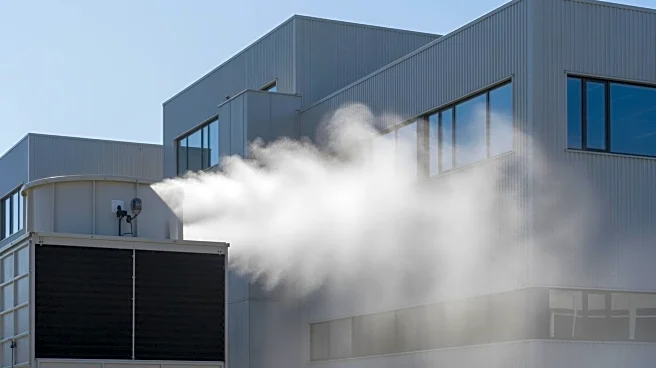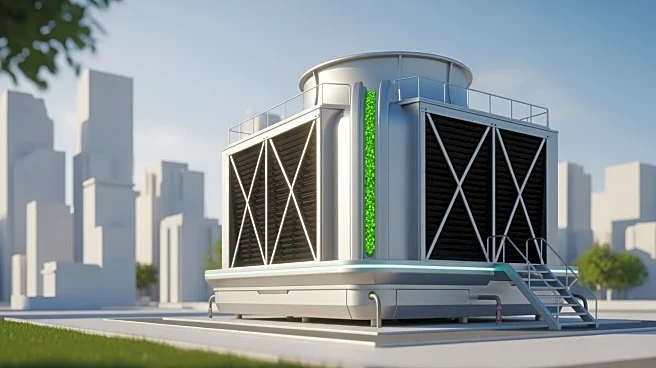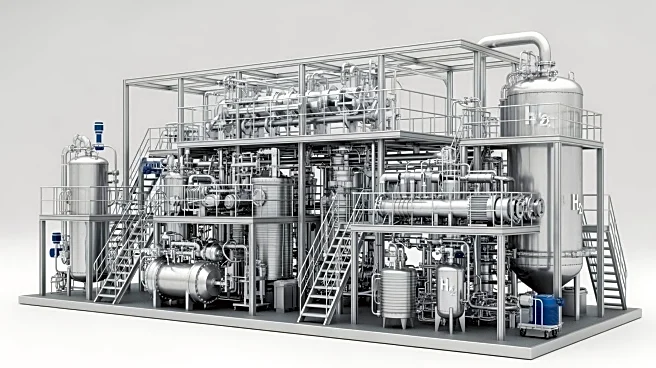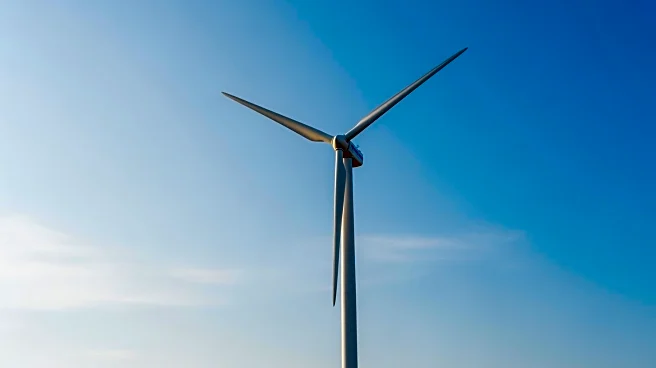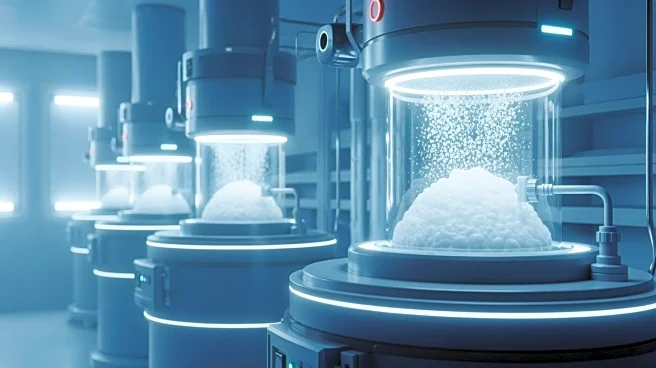What's Happening?
Singapore has commenced operations of its largest industrial district cooling system at STMicroelectronics' Ang Mo Kio TechnoPark, designed to support the company's decarbonization strategy. The system,
developed by SP Group and Daikin Airconditioning, aims to reduce carbon emissions by 120,000 tonnes annually and cut cooling-related electricity costs by 20%. It repurposes over half a million cubic meters of water each year, marking STMicroelectronics' first use of district cooling at a manufacturing facility. This initiative aligns with ST's goal to achieve carbon neutrality by 2027.
Why It's Important?
The launch of the district cooling system represents a significant step towards sustainable industrial practices and environmental stewardship. By reducing carbon emissions and energy consumption, STMicroelectronics is advancing its commitment to sustainability, which is crucial for meeting global climate goals. This development highlights the role of innovative technologies in transforming industrial operations and promoting resource efficiency. It sets a precedent for other companies seeking to integrate sustainable solutions into their operations, potentially influencing industry standards and practices.
What's Next?
STMicroelectronics plans to further enhance its sustainability efforts by upgrading the cooling system at its Toa Payoh site, aiming to reduce carbon emissions by 2,140 tonnes annually. The company is also implementing smart metering infrastructure to monitor energy and water consumption, enabling data-driven decisions for improved efficiency. These initiatives reflect ST's ongoing commitment to environmental impact mitigation and resource conservation.
Beyond the Headlines
The deployment of district cooling systems underscores the importance of collaborative innovation in achieving sustainability goals. By integrating advanced technologies, companies can drive significant environmental benefits while enhancing operational efficiency. This approach not only supports corporate sustainability objectives but also contributes to broader societal and environmental outcomes, fostering a more resilient and sustainable future.
